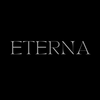story:
Before the first pyramid rose from the sand, before Ra sailed the sky, there was Amon — the Unseen One, the Hidden Flame, the god whose name was once whispered only in darkness.
To the world, Amon was the king of gods, father of creation, the wind that moves but cannot be seen. But to the high priests of Karnak, he was more. He was the key to power itself.

It is said that in the most secret chamber of the great temple, sealed behind walls no map ever marked, lay a shrine — not of gold, but of silence. There, the priests gathered not to worship, but to listen. For Amon did not speak with voice or word, but through thought, through dreams, through the shiver in the still air when truth passes near.
One night, during a lunar eclipse, the High Priest heard something no other ever had: Amon’s true name — the one he bore before the world began. A name that, if spoken aloud, could reshape reality.
Terrified of what he’d learned, the priest cast a spell to bury the name, locking it inside a statue — a figure of Amon, standing tall, with eyes that never close.
The statue was sealed beneath the temple with this curse:
“Let no man find the name unless chosen. Let no mouth speak it unless worthy. Let the god awaken if the world forgets.”
Material:
Pharaonic schist:
Refers to a variety of metamorphic stones widely used by the ancient Egyptians from 3100 to 30 BC. This stone is characterized by its layered composition, which facilitates its shaping and carving. Schist is composed of minerals such as mica, chlorite, and talc, giving it a lustrous sheen and a smooth surface. These qualities made it a valuable material for fine sculptures, ritual objects, and funerary items. The ancient Egyptians preferred schist for its ability to support intricate carvings, making it a prime material for temple statues, stelae, and tomb artifacts, which often held religious significance.
DIMENSIONS:
L: 2.4 inches
D: 4 inches
H: 11 inches
weight: 1.6 lb






